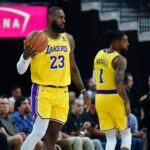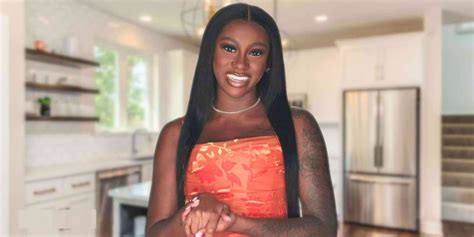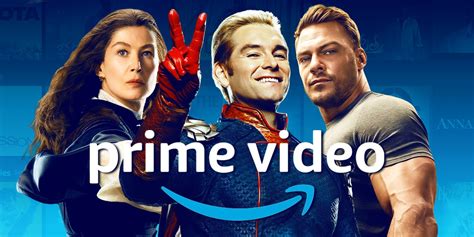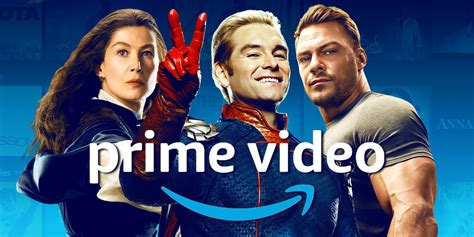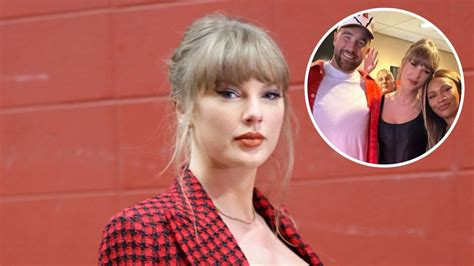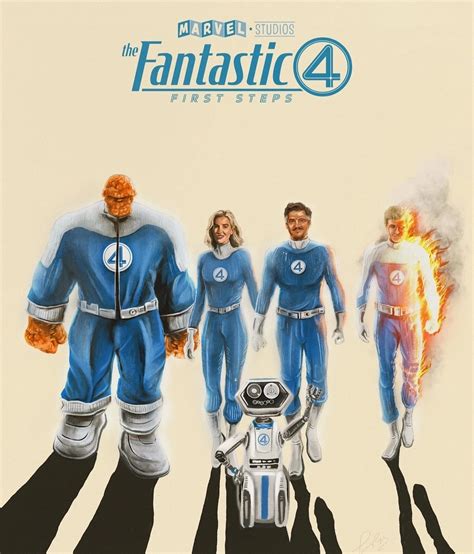
The upcoming Marvel Cinematic Universe (MCU) installment, “Fantastic Four,” is slated to have a shorter runtime than initially anticipated, reportedly clocking in at approximately two hours and 12 minutes (132 minutes). This information surfaced through listings on various movie theater websites, suggesting a more concise narrative for the superhero team’s introduction into the MCU.
Marvel Studios’ “Fantastic Four,” one of the most anticipated movies in the MCU’s Phase Six, appears to be heading towards a more streamlined cinematic experience. The film, directed by Matt Shakman and starring Pedro Pascal as Reed Richards/Mister Fantastic, Vanessa Kirby as Sue Storm/Invisible Woman, Ebon Moss-Bachrach as Ben Grimm/The Thing, and Joseph Quinn as Johnny Storm/Human Torch, has generated considerable buzz since its casting announcements. Now, details regarding its runtime are adding another layer to the anticipation. Initial speculation and industry expectations placed the movie in a typical MCU runtime bracket, often exceeding the two-and-a-half-hour mark. However, listings on several cinema chains, including major players like AMC and Cineworld, indicate a runtime of 2 hours and 12 minutes, or 132 minutes. This includes credits, which means the actual film’s narrative will likely be even shorter.
A shorter runtime can have significant implications for the film’s pacing, storytelling, and overall audience reception. A more concise runtime often demands tighter scripting, efficient character introductions, and a focus on the core narrative elements. In contrast, longer runtimes allow for more extensive character development, intricate plotlines, and the inclusion of subplots or easter eggs that enrich the viewing experience. The decision to trim the “Fantastic Four” runtime could indicate Marvel’s strategy to deliver a focused and action-packed story, prioritizing key plot points and character dynamics over extensive world-building. This can be perceived as a double-edged sword. While a shorter movie can maintain a brisk pace and avoid audience fatigue, it might also risk sacrificing depth and nuance in character development and plot resolution.
The runtime revelation has sparked diverse reactions from fans and industry observers alike. Some view it as a positive sign, suggesting a tightly edited and well-paced film that respects the audience’s time. Others express concern that crucial character arcs and storylines might be rushed or omitted, potentially diminishing the overall impact of the “Fantastic Four” introduction into the MCU. The final reception will heavily depend on how effectively director Matt Shakman and the creative team utilize the available time to deliver a compelling and satisfying cinematic experience.
The film’s narrative choices will also be under scrutiny. With a shorter runtime, the filmmakers will need to make strategic decisions about which aspects of the Fantastic Four’s origin story and comic book lore to emphasize. This may involve streamlining the introduction of key villains, such as Doctor Doom, or focusing primarily on the internal dynamics of the team. The success of these choices will ultimately determine whether the shorter runtime enhances or detracts from the film’s overall quality.
The 132-minute runtime, as reported by cinema listings, is subject to change before the official release. The final cut of the film may undergo further editing or adjustments in the coming months, potentially altering the runtime. It is crucial to consider this information as preliminary until confirmed by Marvel Studios. As the release date approaches, further details regarding the final runtime and content of “Fantastic Four” will likely emerge, providing a clearer picture of the film’s overall structure and narrative scope. Fans and industry observers will be closely monitoring these developments to gauge the potential impact on the MCU’s newest addition.
Comparing “Fantastic Four’s” reported runtime to other MCU films provides useful context. Many MCU installments have exceeded the two-and-a-half-hour mark, particularly those involving significant crossover events or complex storylines. Films like “Avengers: Endgame” (181 minutes), “Avengers: Infinity War” (149 minutes), and “Guardians of the Galaxy Vol. 3” (150 minutes) all boast substantial runtimes to accommodate their sprawling narratives and extensive character ensembles. In contrast, some MCU films have opted for shorter, more streamlined formats. “Thor: The Dark World” (112 minutes) and “The Incredible Hulk” (112 minutes) are among the briefest entries in the franchise, focusing on self-contained stories with limited scope. “Fantastic Four’s” reported 132-minute runtime places it somewhere in the middle, suggesting a balance between narrative depth and pacing efficiency. This could indicate that Marvel Studios is aiming for a focused and accessible introduction to the Fantastic Four, while still leaving room for future exploration and expansion within the broader MCU.
The direction under Matt Shakman will also be crucial in determining how well the shorter runtime is managed. Shakman, known for his work on television series such as “WandaVision” and “Game of Thrones,” has demonstrated an ability to craft compelling narratives within constrained timeframes. His experience in balancing character development, plot progression, and visual spectacle could prove invaluable in delivering a satisfying “Fantastic Four” film within the reported runtime. Shakman’s creative vision and directorial choices will ultimately shape the film’s tone, pacing, and overall impact on the MCU.
Casting choices have also garnered attention. Pedro Pascal’s casting as Reed Richards has been widely praised, given his proven ability to portray complex and charismatic characters. Vanessa Kirby’s selection as Sue Storm has also been met with enthusiasm, as she brings a combination of intelligence, strength, and emotional depth to the role. Ebon Moss-Bachrach’s portrayal of Ben Grimm and Joseph Quinn as Johnny Storm have generated excitement, with fans eager to see how these actors embody the iconic personalities of their respective characters. The chemistry and dynamics between the four leads will be essential in capturing the essence of the Fantastic Four and establishing their place within the MCU. The shorter runtime will likely require a focus on these core relationships, highlighting the familial bonds and interpersonal conflicts that define the team’s dynamic.
Looking at the broader context of the MCU, “Fantastic Four” represents a significant milestone in the franchise’s ongoing expansion. The introduction of Marvel’s first family opens up a wealth of storytelling possibilities, paving the way for exploration of cosmic realms, scientific frontiers, and complex moral dilemmas. The Fantastic Four’s unique blend of adventure, humor, and heart has made them enduringly popular with comic book fans, and their integration into the MCU promises to enrich the cinematic universe with new dimensions and perspectives. The film’s success will be crucial in establishing the Fantastic Four as key players in the MCU’s future, potentially leading to further sequels, spin-offs, and crossover events with other established characters.
The film’s placement within Phase Six of the MCU also holds significance. Following the conclusion of the Infinity Saga, the MCU has been gradually introducing new storylines, characters, and cosmic threats. Phase Four and Phase Five laid the groundwork for the Multiverse Saga, exploring alternate realities, time travel, and the emergence of powerful new villains. “Fantastic Four” is poised to play a pivotal role in this overarching narrative, potentially connecting to existing storylines and introducing new elements that will shape the future of the MCU. The film’s plot may tie into the Multiverse Saga, exploring alternate versions of the Fantastic Four or introducing villains from other realities. The film could also establish new scientific or technological concepts that have broader implications for the MCU’s future, such as advanced forms of energy, interdimensional travel, or genetic manipulation.
Fan speculation regarding the film’s plot and potential connections to the broader MCU is rampant. Many theories revolve around the origin of the Fantastic Four’s powers, with some suggesting that they may be linked to cosmic events or experiments involving alternate realities. Other theories focus on the identity of the film’s main villain, with Doctor Doom being the most frequently cited candidate. Some fans speculate that the film may introduce other iconic Marvel characters, such as Galactus or the Silver Surfer, who have strong ties to the Fantastic Four in the comic books. The shorter runtime may necessitate a streamlined approach to these plot elements, focusing on the most essential aspects of the story and leaving room for further exploration in future installments.
One approach the filmmakers may take is focusing on a specific, self-contained storyline from the Fantastic Four comic books. This would allow them to deliver a complete and satisfying narrative within the 132-minute runtime, while still capturing the essence of the characters and their world. Some potential storylines include the team’s first encounter with Doctor Doom, their exploration of the Negative Zone, or their battle against the Skrulls. By adapting a well-defined storyline, the filmmakers can avoid overwhelming the audience with too much information and focus on delivering a compelling and accessible introduction to the Fantastic Four.
The visual effects and action sequences in “Fantastic Four” will also be crucial in captivating audiences and showcasing the team’s unique abilities. The film will likely feature a blend of practical effects and CGI, aiming to create visually stunning and believable depictions of the Fantastic Four’s powers. The stretching abilities of Mister Fantastic, the invisibility and force field powers of Invisible Woman, the rocky form of The Thing, and the fiery transformations of Human Torch will all require innovative visual effects techniques to bring them to life on the big screen. The action sequences will likely be dynamic and inventive, showcasing the team’s teamwork and strategic thinking as they battle villains and overcome obstacles. The shorter runtime may necessitate a focus on quality over quantity, prioritizing a few key action sequences that highlight the team’s powers and personalities.
The musical score and soundtrack of “Fantastic Four” will also play a significant role in shaping the film’s tone and atmosphere. The score will likely be composed by a talented musician who can capture the sense of adventure, wonder, and excitement that defines the Fantastic Four’s world. The soundtrack may feature a mix of original songs and existing tracks, aiming to create a contemporary and engaging listening experience for audiences. The musical score will likely be used to enhance the emotional impact of key scenes, emphasizing the relationships between the characters and the stakes of their adventures.
Ultimately, the success of “Fantastic Four” will depend on a combination of factors, including the quality of the script, the direction, the performances, the visual effects, and the overall execution. The shorter runtime presents both challenges and opportunities for the filmmakers, requiring them to make strategic decisions about which aspects of the story to emphasize and how to deliver a compelling and satisfying cinematic experience within the available time. The film’s reception will be closely watched by fans, critics, and industry observers alike, as it represents a significant milestone in the MCU’s ongoing evolution and expansion. Whether the concise runtime proves to be an asset or a hindrance remains to be seen, but one thing is certain: “Fantastic Four” is poised to make a significant impact on the MCU and shape the future of the franchise.
The pressure is on Marvel Studios to deliver a film that not only honors the legacy of the Fantastic Four but also seamlessly integrates them into the existing MCU narrative. The shorter runtime adds another layer of complexity to this challenge, requiring a focused and efficient approach to storytelling. The creative team will need to strike a delicate balance between introducing the characters, establishing their world, and setting up future storylines, all while adhering to the constraints of the 132-minute runtime. The success of “Fantastic Four” will ultimately depend on their ability to navigate these challenges and deliver a film that is both entertaining and meaningful for audiences.
The anticipation surrounding “Fantastic Four” is palpable, with fans eagerly awaiting the arrival of Marvel’s first family into the MCU. The shorter runtime has only intensified the speculation and debate, as audiences ponder the implications for the film’s plot, pacing, and overall quality. As the release date draws closer, more details will undoubtedly emerge, providing a clearer picture of what to expect from this highly anticipated installment. Whether the film lives up to the hype remains to be seen, but one thing is certain: “Fantastic Four” is poised to be a major event in the MCU, and its success will have a significant impact on the future of the franchise. The news about the runtime also brings up the discussion of production costs. Streamlining the movie by trimming runtime could be an effective way to reduce the cost of production. This might be a strategy Marvel adopts to optimize its investments in different projects in its expansive slate.
Frequently Asked Questions (FAQs):
1. What is the reported runtime of the upcoming “Fantastic Four” movie? The reported runtime for “Fantastic Four,” as listed on various movie theater websites, is approximately 2 hours and 12 minutes (132 minutes), including credits.
2. Why is the runtime of “Fantastic Four” considered shorter than expected for an MCU film? Many MCU installments, especially those involving major crossover events, often exceed the two-and-a-half-hour mark. “Fantastic Four’s” reported runtime is more concise, leading to speculation about a more focused narrative.
3. Who are the main cast members of the “Fantastic Four” movie? The main cast includes Pedro Pascal as Reed Richards/Mister Fantastic, Vanessa Kirby as Sue Storm/Invisible Woman, Ebon Moss-Bachrach as Ben Grimm/The Thing, and Joseph Quinn as Johnny Storm/Human Torch.
4. How might a shorter runtime affect the storytelling and character development in “Fantastic Four”? A shorter runtime may necessitate tighter scripting and a focus on core narrative elements, potentially leading to a faster pace. However, it might also risk sacrificing depth and nuance in character development and plot resolution.
5. Is the reported runtime final, or could it change before the movie’s release? The reported runtime, based on cinema listings, is subject to change before the official release. The final cut of the film may undergo further editing or adjustments, potentially altering the runtime.
6. What is the significance of “Fantastic Four” within the broader MCU? “Fantastic Four” is a significant milestone, introducing Marvel’s first family into the MCU, opening up new storytelling possibilities, cosmic realms, and scientific frontiers. It’s expected to play a pivotal role in the Multiverse Saga and future MCU storylines.
7. What past experiences does the director, Matt Shakman, have? Matt Shakman is known for his work on television series such as “WandaVision” and “Game of Thrones.” His experience in balancing character development, plot progression, and visual spectacle could prove invaluable in delivering a satisfying “Fantastic Four” film within the reported runtime.
8. What are some potential challenges and opportunities of the shorter runtime? The shorter runtime presents challenges, requiring strategic decisions about story emphasis. However, it also offers opportunities for a tightly edited and well-paced film, respecting the audience’s time. The success hinges on efficient storytelling.
9. How does the runtime of “Fantastic Four” compare to other MCU movies? Compared to films like “Avengers: Endgame” (181 minutes) and “Avengers: Infinity War” (149 minutes), “Fantastic Four” at 132 minutes is shorter. It is similar to films like “Thor: The Dark World” (112 minutes) and “The Incredible Hulk” (112 minutes).
10. What are some of the fan speculations regarding the plot? Fan theories revolve around the origin of the Fantastic Four’s powers, potential links to cosmic events, experiments involving alternate realities, and the identity of the film’s main villain (often speculated to be Doctor Doom).
11. How will the visual effects and action sequences be used to enhance the movie?
The film will likely feature a blend of practical effects and CGI to create visually stunning depictions of the Fantastic Four’s powers. The action sequences will be dynamic and inventive, showcasing the team’s teamwork.
12. What role will the musical score play in “Fantastic Four”?
The musical score and soundtrack will play a significant role in shaping the film’s tone and atmosphere. The score will enhance the emotional impact of key scenes, emphasizing character relationships and the stakes of their adventures.
13. What is the broader significance of Fantastic Four’s integration into Phase Six of the MCU?
Integrating Fantastic Four into Phase Six holds profound significance. It signifies the introduction of a cornerstone Marvel property into the MCU’s evolving narrative landscape, opening avenues for exploring cosmic realms, scientific frontiers, and complex moral dilemmas. This strategic inclusion is expected to enrich the cinematic universe with new dimensions and perspectives, potentially setting the stage for future sequels, spin-offs, and crossover events.
14. How does the “Fantastic Four” film connect to the established Multiverse Saga within the MCU?
The film’s narrative may intersect with the Multiverse Saga, delving into alternate versions of the Fantastic Four or introducing antagonists from diverse realities. Additionally, the film might unveil groundbreaking scientific or technological concepts that reverberate throughout the MCU, such as advanced energy sources, interdimensional travel, or genetic manipulation.
15. What are potential storylines from the comic books that could be adapted for the film?
Adaptation possibilities include the team’s inaugural encounter with Doctor Doom, exploration of the Negative Zone, or confrontation with the Skrulls. By focusing on a well-defined storyline, filmmakers can deliver a complete narrative within constraints while capturing the essence of the characters and their world.
16. What pressures are on Marvel Studios to deliver a successful Fantastic Four film?
Marvel Studios faces the challenge of honoring the legacy of the Fantastic Four while seamlessly integrating them into the existing MCU narrative. The shorter runtime adds complexity, demanding a focused approach to storytelling. The creative team must strike a balance between introducing characters, establishing their world, and setting up future storylines within constraints.
17. How might the film’s placement within Phase Six affect its storyline and connections to the broader MCU narrative?
Given the end of the Infinity Saga, the film will be a cornerstone in establishing new characters, storylines, and galactic threats for the Marvel universe. “Fantastic Four” is expected to have significant role in the overarching narrative, connecting with existing storylines and developing new ones that will influence the MCU in the future.
18. What factors will ultimately determine the success of “Fantastic Four” in the MCU?
The success of the film will depend on a combination of aspects, including the quality of the script, performance of the actors, direction, special effects, and the overall execution. Considering the runtime limitation, the film will be a major step for MCU. Whether the shorter runtime becomes an advantage or a disadvantage, it remains to be seen. Overall, Fantastic Four is poised to be a major event in the MCU and its success will have a significant impact on the future of the franchise.
19. In what ways might a shorter runtime actually benefit the “Fantastic Four” film?
A shorter runtime might lead to a more focused and tightly paced narrative, preventing the film from becoming bogged down in unnecessary subplots or extended exposition. This could result in a more engaging and entertaining experience for audiences who prefer a brisk and efficient storytelling approach.
20. Given the time constraints, how might the filmmakers balance introducing each character effectively while advancing the main plot?
The filmmakers will likely need to employ concise character introductions, utilizing efficient dialogue and visual storytelling to quickly establish the personalities, powers, and relationships of each member of the Fantastic Four. Flashbacks or brief origin sequences could be used to provide essential background information without sacrificing too much screen time.
21. How might the shorter runtime influence the development of the film’s central villain, and what are some of the challenges associated with portraying a complex antagonist like Doctor Doom within these constraints?
The shorter runtime may necessitate a more streamlined portrayal of the film’s central villain, potentially focusing on their most essential motivations and actions. Developing a complex antagonist like Doctor Doom within these constraints presents a challenge, as it requires efficiently conveying his intelligence, ambition, and deep-seated conflicts without sacrificing the film’s overall pacing. The filmmakers may need to prioritize his most iconic traits and motivations, while leaving room for further exploration of his character in future installments.
22. How might the use of humor and lighter tones be affected by the shorter runtime?
The shorter runtime may require a more judicious use of humor and lighter tones, ensuring that these elements enhance the storytelling without detracting from the film’s overall momentum. Comedic moments may be integrated seamlessly into the action sequences or character interactions, providing brief respites from the more serious aspects of the plot. The filmmakers may need to avoid extended comedic tangents or overly self-referential humor, prioritizing wit and charm over broad or slapstick gags.
23. What are some potential risks associated with adapting a complex comic book property like the Fantastic Four within a shorter runtime?
One potential risk is that the film may feel rushed or incomplete, failing to fully explore the characters, their relationships, and the rich mythology of the Fantastic Four. Another risk is that the film may oversimplify certain aspects of the story, sacrificing nuance and depth in favor of efficiency. Additionally, the shorter runtime may limit the ability to introduce supporting characters or establish connections to the broader MCU, potentially diminishing the film’s impact and long-term significance.
24. Considering the shorter runtime, how might the film approach its action sequences to maximize their impact and efficiency?
The film may prioritize a smaller number of carefully choreographed and visually stunning action sequences, focusing on quality over quantity. These sequences could be designed to showcase the unique powers and teamwork of the Fantastic Four, while also advancing the plot and revealing key character traits. The filmmakers may need to avoid overly extended or gratuitous action scenes, ensuring that each sequence serves a specific purpose and contributes to the overall narrative.
25. How does the runtime of “Fantastic Four” compare to the average runtime of superhero films released in recent years?
The runtime of “Fantastic Four” is on the shorter end compared to the average runtime of superhero films released in recent years. Many superhero films, especially those with ensemble casts or complex storylines, often exceed two and a half hours in length. The shorter runtime of “Fantastic Four” may indicate a deliberate effort to create a more accessible and streamlined viewing experience for audiences.
26. Could a shorter runtime potentially lead to a more focused and impactful film, or does it primarily pose limitations for storytelling?
While a shorter runtime can present limitations for storytelling, it also has the potential to lead to a more focused and impactful film. By prioritizing the most essential elements of the story and avoiding unnecessary tangents, the filmmakers can create a more streamlined and engaging narrative that resonates with audiences. The key is to strike a balance between efficiency and depth, ensuring that the film delivers a satisfying and complete experience within the available time.
27. What role might Easter eggs and subtle references play in enriching the experience of viewers familiar with the Fantastic Four comics, even within a shorter runtime?
Even within a shorter runtime, Easter eggs and subtle references can play a significant role in enriching the experience of viewers familiar with the Fantastic Four comics. These small details can add depth and meaning to the film, rewarding attentive viewers with a deeper connection to the source material. The filmmakers may strategically include Easter eggs that hint at future storylines, reference iconic moments from the comics, or pay homage to the creators who brought the Fantastic Four to life.
28. Could the shorter runtime suggest a more self-contained story that may not heavily rely on existing MCU lore and continuity?
Yes, the shorter runtime could suggest that “Fantastic Four” will be a more self-contained story that doesn’t heavily rely on existing MCU lore and continuity. This would allow the film to be more accessible to new viewers who are not familiar with the broader MCU, while still providing a satisfying experience for long-time fans. The filmmakers may choose to focus on the core elements of the Fantastic Four’s origin story and their relationships with each other, rather than delving into complex connections to other MCU characters or events.
29. How could a shorter runtime affect the potential for developing complex themes or social commentary within the film?
A shorter runtime may limit the potential for developing complex themes or social commentary within the film, as it requires prioritizing the core narrative and character development over broader exploration of social issues. However, the filmmakers may still be able to subtly incorporate thematic elements into the story, using character interactions or plot events to explore ideas about family, responsibility, and the impact of science and technology on society. The key is to integrate these themes organically into the narrative, without sacrificing the film’s pacing or entertainment value.


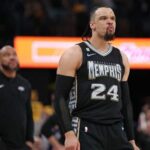
![[Restaurant Name] Returns! Iconic Chain Revives After 30-Year Absence](https://generasitekno.com/wp-content/uploads/2025/06/unnamed-file-924-150x150.jpg)
